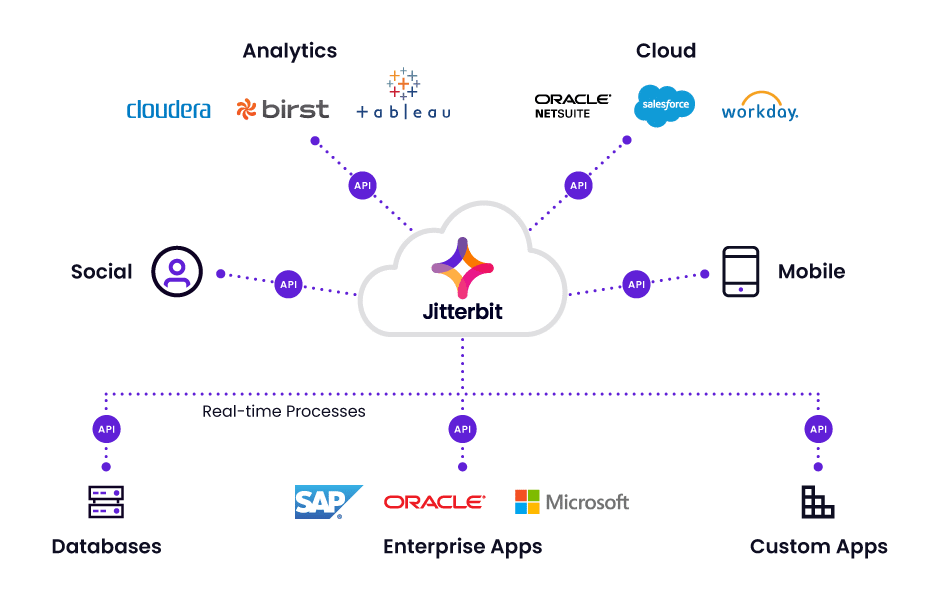Introduction to API Integration
In today’s digital-first world, businesses rely on various applications, tools, and platforms to streamline operations, serve customers, and stay competitive. However, these tools don’t operate in isolation. To maximize their effectiveness, seamless data flow between them is essential. This is where API Integration comes in, allowing different systems to communicate, share information, and create efficient workflows. Whether you’re an e-commerce business, a service provider, or an enterprise, understanding and leveraging API Integration can be a game-changer for efficiency and user experience.
What is API Integration?
API Integration refers to connecting multiple software applications or systems using an Application Programming Interface (API). An API allows two different software programs to communicate with each other, making it possible to share data, automate tasks, and create more integrated experiences. With API Integration, businesses can avoid manual data transfer and ensure that applications work in harmony.
APIs come in various forms, such as REST, SOAP, and GraphQL, each designed for different needs. Integrating APIs enables different applications to “talk” to each other in real time, enhancing system functionality, boosting performance, and delivering more value to users.
Why API Integration Matters for Businesses
Modern business landscapes are diverse, with multiple systems like CRMs, ERPs, payment gateways, social media platforms, and customer support tools all functioning in tandem. However, without proper integration, these tools can become silos, limiting the flow of information. API Integration breaks down these silos, allowing for better functionality, automation, and enhanced user experiences.
Some benefits of API Integration include:
- Increased Efficiency: By automating repetitive tasks and data sharing, teams save time and reduce human errors.
- Enhanced Customer Experience: Integrating customer data from various sources gives a holistic view, enabling personalized customer experiences.
- Data Accuracy: When data flows automatically, it reduces inconsistencies and enhances accuracy across systems.
- Scalability: API Integration allows businesses to scale and adapt to new tools and technologies with ease.
- Cost Savings: Integrating systems helps avoid redundancy and cuts down on the costs associated with data management.
How Does API Integration Work?
API Integration works by setting up APIs to allow applications to communicate and share data. Here’s a simplified step-by-step breakdown of how it typically works:
- Define Objectives: Determine the goals for integrating the API. Is it to transfer data, automate tasks, or enable specific functionalities?
- Select the Right API: Choose an API that fits your requirements, such as a REST API for scalability or a SOAP API for security.
- Authenticate Access: Secure access is crucial, and APIs often use methods like OAuth to control access and maintain security.
- Test the API: Before full implementation, conduct thorough testing to ensure the API functions as expected without bugs or compatibility issues.
- Deploy the API Integration: After testing, deploy the API, monitor its performance, and adjust as needed for optimal results.
Common Use Cases of API Integration
API Integration plays a vital role across industries, making processes easier and improving user experiences. Here are some popular examples:
- E-commerce: Integrating payment gateways, inventory management, and order tracking through APIs ensures seamless operations and enhances customer satisfaction.
- Social Media: Social media APIs allow businesses to share content, track engagement, and manage multiple accounts from a single platform.
- Customer Relationship Management (CRM): By integrating CRM systems with other tools, businesses get a unified view of their customers, enhancing personalization and engagement.
- Marketing Automation: API Integration in marketing tools allows seamless customer data transfer between systems, enabling better-targeted campaigns.
Challenges in API Integration
While API Integration offers numerous benefits, it’s not without challenges. Some common obstacles include:
- Security Risks: APIs need to be secured to prevent unauthorized access, data leaks, and other security threats.
- Complexity: Integrating complex systems with different data formats and protocols can be challenging.
- Version Compatibility: As APIs evolve, managing version compatibility between different software versions can be tricky.
- Performance Bottlenecks: Inefficient API integration can lead to slower performance, impacting user experience.
Best Practices for API Integration
Ensuring successful API Integration requires adhering to best practices. Here are a few that can enhance security, efficiency, and maintainability:
- Use Documentation: API documentation is critical. Following it can save time and prevent common errors during integration.
- Implement Error Handling: Build robust error-handling mechanisms to ensure minimal disruption in case of issues.
- Regular Updates: Keep APIs updated to the latest version to maintain compatibility and security.
- Use Secure Authentication Methods: Use methods like OAuth to protect sensitive data and restrict access.
- Monitor Performance: Regularly monitor the performance of APIs to detect and resolve any issues that may arise.
The Role of API Testing in API Integration
API Testing is a crucial step in the API Integration process. It ensures that the API performs as expected and that data is accurately transferred between systems. Through testing, developers can identify and fix issues, ensuring a smooth integration. Testing helps in:
- Validating Data Accuracy: Ensures that data flows correctly and consistently between systems.
- Security Checks: Testing APIs for vulnerabilities helps prevent unauthorized access and data breaches.
- Performance Optimization: Testing helps identify any performance issues, such as slow response times or data bottlenecks.
Conclusion
API Integration is no longer optional in a world where seamless digital experiences are key to business success. From enhancing efficiency and enabling automation to providing a unified user experience, API Integration serves as a foundation for growth and innovation. However, to truly maximize its benefits, businesses need to invest in the right APIs, secure them properly, and consistently test them.
For businesses seeking to scale, reduce costs, and improve customer satisfaction, API Integration can be a valuable tool, helping bridge various systems and providing a unified platform that drives meaningful outcomes. As technology continues to evolve, staying updated on the latest API practices and trends can help maintain a competitive edge in any industry.





